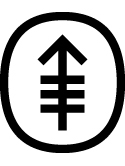| Abstract: |
CD14 is a myclomonocytic differentiation antigen expressed by monocytes, macrophages, and activated granulocytes and is detectable with the monoclonal antibodies MO2, MY4, and LeuM3. Analyses of complementary DNA and genomic clones of CD14 show that it has a novel structure and that it maps to chromosome 5 within a region containing other genes encoding growth factors and receptors; it may therefore represent a new receptor important for myeloid differentiation. In addition, the CD14 gene is included in the "critical" region that is frequently deleted in certain myeloid leukemias. |
| Keywords: |
leukemia; animal; mice; cell differentiation; monoclonal antibody; antibodies, monoclonal; dna; antigen; genetic engineering; cell culture; rna, messenger; hematopoietic cell; receptor; nucleic acid hybridization; monocytes; macrophages; growth factor; myelodysplastic syndromes; antigens, differentiation; differentiation; chromosome mapping; electrophoresis, polyacrylamide gel; receptors, cell surface; antigens, cd14; growth substances; myeloid leukemia; chromosomes, human, pair 5; granulocytes; chromosome translocation 5; immunosorbent techniques; human; priority journal; support, non-u.s. gov't; support, u.s. gov't, p.h.s.; support, u.s. gov't, non-p.h.s.
|



